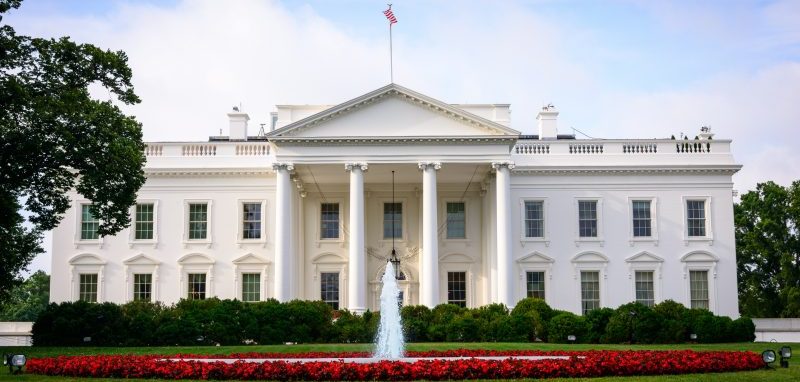Three days into his role as commander-in-chief, Donald Trump ordered a hiring freeze of federal civilian employees. As promised, the White House followed up with an April 12 memo laying out the administration’s “comprehensive plan for reforming the federal government and reducing the civilian workforce.”
The 14-page memo marks the end of the hiring freeze, but it doesn’t give civilian agencies free reign to hire as they please. In fact, it calls for agencies to plan for near- and long-term workforce reductions and devise a plan for eliminating activities that are not core to their mission, or structure and streamline them, among other things.
“In place of the hiring freeze, agencies should adhere to the principles, requirements, and actions laid out in this memorandum to inform workforce planning and personnel actions,” Office of Management and Budget Director Mick Mulvaney said in the memo to executive departments and agencies.
It’s not just agency functions that the Trump administration is looking to cut. White House officials are also eyeing opportunities to reduce the cost and size of government that would require changes to current laws and regulations, including “shutting down or merging agencies, components or programs,” the memo noted.
Speaking at an April 11 press conference with reporters, Mulvaney said, for example, that the administration may decide that it makes more sense for the National Nuclear Security Administration (NNSA) to reside within the Defense Department rather than the Energy Department. The NNSA is responsible for enhancing national security through the military application of nuclear science.
“That would take some type of congressional authority to do that,” he said. “We’re not trying to ram it down their throats. We try and sell it to them just like we’re trying to sell it to everybody else.”
The memo calls on agencies to align their reorganization and reduction efforts with the president’s fiscal 2018 budget, which called for deep spending cuts across civilian agencies.
“To support the goals of the FY 2018 President’s Budget Proposal, OMB directs agencies to identify workforce reductions over a four-year period (FY 2018 through 2022) consistent with discretionary outyear levels included in the FY 2018 Budget this spring and forthcoming OMB guidance on FY 2019 Budget submissions,” the memo states. “Agencies should begin planning for these reductions now, as achieving associated personnel reductions takes time to implement and realize savings.”
To expedite workforce reductions, the Office of Personnel Management will streamline templates to agencies for requesting approval to offer Voluntary Early Retirement Authority and Voluntary Separation Incentive Payments (VERA/VSIP). OPM will also provide expedited reviews for most requests within 30 days, according to the memo. But agencies are encouraged to begin eliminating “unnecessary vacant positions” immediately.
The memo also instructs agencies to review all of their employees who are on administrative leave because of performance deficiencies or misconduct. Agencies are instructed to determine whether those individuals should return to work, be assigned alternative duties, or be subjected to other appropriate action, up to and including removal.
This multi-year effort to restructure federal programs, offices and the workforce includes several deadlines, some of which are listed below. According to the memo:
By June 12, 2017- OMB will coordinate with agencies that place reporting and compliance requirements on other agencies to identify initial reporting activities that can be immediately stopped or modified. The goal is to reduce reporting and compliance burden.
By June 30, 2017– Agencies must submit a high-level draft of their reform plan to OMB. The plan should include progress on near-term workforce reduction actions, a plan to maximize employee performance (see page 12 of the memo), and an analytical framework that considers how agencies’ activities align with their mission. This framework will focus on opportunities to eliminate activities, restructure or merge them, improve organizational efficiency and effectiveness, and workforce management.
By September 2017– Agencies must submit a draft reform plan to OMB as part of their fiscal 2019 budget submission. The plan must address long-term workforce reductions at the agency. The April OMB memo notes that limited exceptions will be granted on a case-by-case basis for agencies that cannot meet the deadline. Agency plans, along with input from the public, will be used to formulate a comprehensive governmentwide reform plan for publication in the president’s fiscal 2019 budget.
Starting February 2018, the Trump administration will begin tracking progress on its governmentwide reform plan.
“This is about good government,” Mulvaney said. “It’s not about big government, it’s not about small government. It’s about good government. And that is what I think the president talks about when he talks about ‘draining the swamp.’”
Visit GovLoop.com in the coming weeks for ongoing coverage about the administration’s plans for the federal workforce.





The people who accept Voluntary Separation Incentive Payments are usually the best and the brightest who have opportunities in the private sector. It is never the hum drum barely productive employees. What happens when the first group leaves and only the second remains?
Maybe true but would also induce retirement-eligible or late-career staff to move on, instead of playing out the string. Most agencies have high- or mid-level staff who perform well enough to maintain a “satisfactory” rating but don’t have any motivation to excel, because they know they’re not going to have a promotion opportunity (and probably don’t want one) and can’t get fired. Meanwhile, they take up space — a fed slot that could be used for a higher performer or more critical position. You also see that at lower ranks. Instead of spending money keeping them onboard, spend the money to move them out.
Spoken like a true government Republican. Nothing outside of money means anything to your kind. Only the bottom line matters. You will never understand, the government IS NOT A BUSINESS. If it were, we wouldn’t pay taxes so your kind could fleece it. Wal-Mart has invested in some upper end companies because they claim there won’t be a middle class or even lower middle class to sell cheap overseas goods too in the future. There are going to be the upper class rulers and their slaves like dictators have always believed it should be.
Wow. So “draining the swamp” which initially meant getting rid of special interests and big money has turned into getting rid of government workers, which is me. It gone from top to bottom in the blink of an eye.